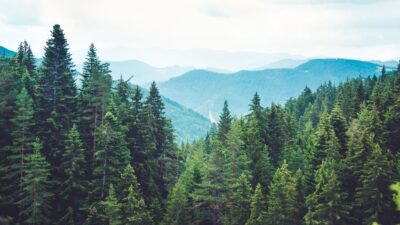
A century ago, the American chestnut tree (Castanea dentata) was a dominant presence in the eastern United States, with an estimated 4 billion trees stretching from Georgia to Maine. This majestic species played a crucial role in forest ecosystems, providing habitat and food for wildlife, as well as valuable timber for human use. However, the introduction of an invasive fungal pathogen, Cryphonectria parasitica, in the early 20th century led to a devastating blight that decimated the American chestnut population, reducing it to a fraction of its former abundance.
The Importance of Restoring America’s Forests
Restoring America’s forests, particularly the American chestnut, is vital for enhancing biodiversity, improving ecosystem services, and bolstering climate resilience. Healthy forests sequester carbon dioxide, mitigate climate change, purify air and water, and provide recreational opportunities. The loss of the American chestnut has left a significant void in these ecological functions, underscoring the importance of restoration efforts.
Advances in American Chestnut Restoration
In recent years, significant progress has been made toward restoring the American chestnut:events.waterburyregionarts.com+7Associated Press+7tacf.org+7
- Genetic Research and Breeding Programs: The American Chestnut Foundation (TACF) has been at the forefront of breeding blight-resistant American chestnuts. By crossbreeding surviving American chestnuts with blight-resistant Chinese chestnuts (Castanea mollissima), TACF aims to produce trees that retain the American chestnut’s characteristics while resisting the blight. This backcross breeding program has yielded promising results, with several generations of hybrids showing increased resistance and adaptability. Wildlife Society+5tacf.org+5tacf.org+5alleghenyfront.org+1tacf.org+1
- Biotechnology Initiatives: Researchers at the State University of New York College of Environmental Science and Forestry (SUNY-ESF) have developed a transgenic American chestnut known as ‘Darling 58.’ By introducing a gene from wheat that detoxifies the oxalate produced by the blight fungus, ‘Darling 58’ exhibits enhanced resistance to the disease. This biotechnological approach complements traditional breeding efforts and offers another pathway to restoration. alleghenyfront.org+1tacf.org+1
- Regulatory Milestones: As of 2025, ‘Darling 58’ is under regulatory review by federal agencies, including the USDA, EPA, and FDA. Approval would mark the first use of genetic engineering in forest tree restoration, setting a precedent for future conservation projects.
Collaborative Efforts in Forest Restoration
Restoring America’s forests requires collaboration among government agencies, non-profit organizations, academic institutions, and local communities:
- National Initiatives: The U.S. Department of Agriculture (USDA) has proposed amendments to forest management plans to conserve old-growth forests, recognizing their role in carbon sequestration and biodiversity preservation. This initiative reflects a broader commitment to sustainable forest management and climate change mitigation. usda.gov+1eri.nau.edu+1
- Public-Private Partnerships: Organizations like the National Fish and Wildlife Foundation (NFWF) have launched programs such as America’s Ecosystem Restoration Initiative, which supports locally led projects focused on habitat restoration, community resilience, and conservation workforce development. These partnerships leverage resources and expertise to amplify restoration efforts nationwide. nfwf.org
The Path Forward: Engaging Communities and Leveraging Technology
To ensure the success of forest restoration initiatives, it is essential to engage local communities and harness technological advancements:
- Community Involvement: Educational programs and volunteer opportunities can empower individuals to participate in restoration activities. For example, local events organized by libraries and community centers can raise awareness and foster stewardship. events.waterburyregionarts.com
- Technological Tools: Innovations such as the Reforestation Hub, developed by The Nature Conservancy and American Forests, provide interactive maps identifying optimal areas for reforestation. These tools assist planners and conservationists in making data-driven decisions to maximize ecological and economic benefits. nature.org+1usda.gov+1
Rebuilding America’s forests, with a focus on restoring the American chestnut, is a multifaceted endeavor that combines traditional breeding, biotechnology, policy reform, and community engagement. These efforts not only aim to revive an iconic species but also to enhance ecosystem services, combat climate change, and foster a deeper connection between people and nature. As we progress through 2025, continued collaboration and innovation will be key to achieving these restoration goals.
At Cold Stream Farm, we offer a large variety of trees and shrubs for wholesale at our Michigan Farm. Our mission is to provide communities and companies with the right resources to encourage the growth and health of natural ecosystems. If you’re looking for trees and shrubs, check out our tree and shrub inventory and give us a call today at (231) 464-5809 for more information!
